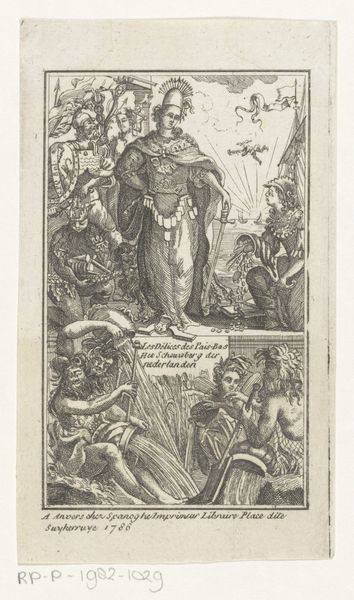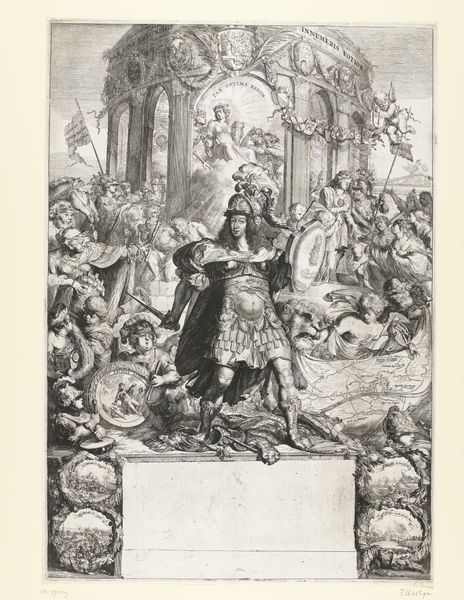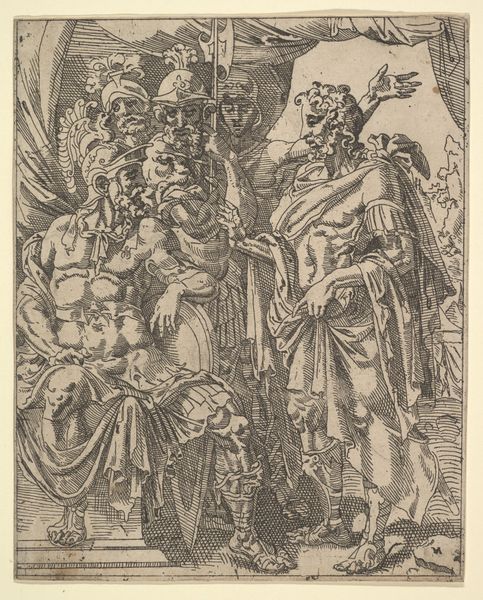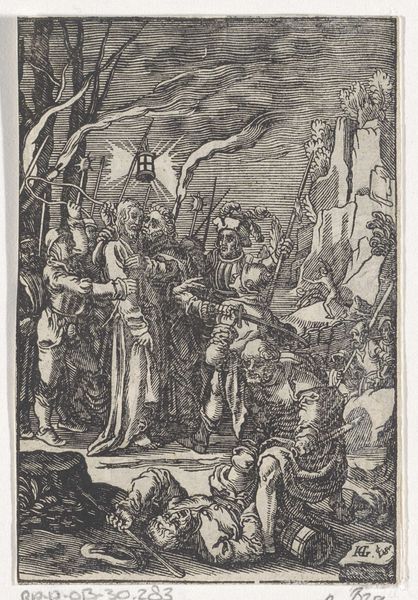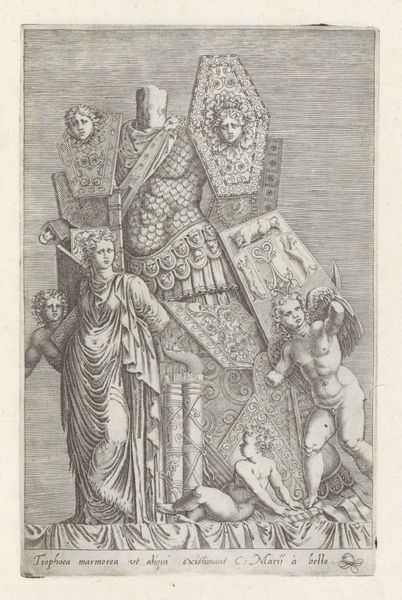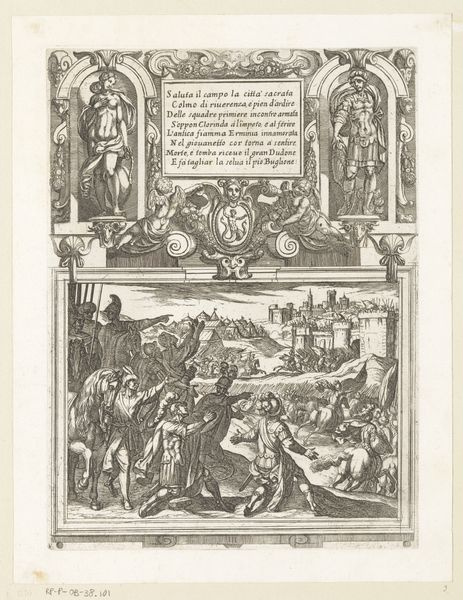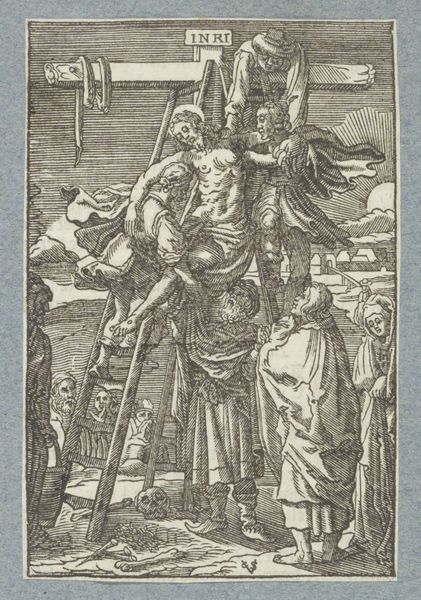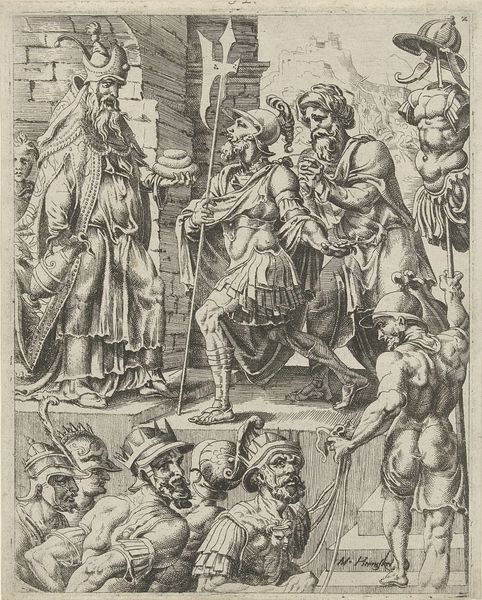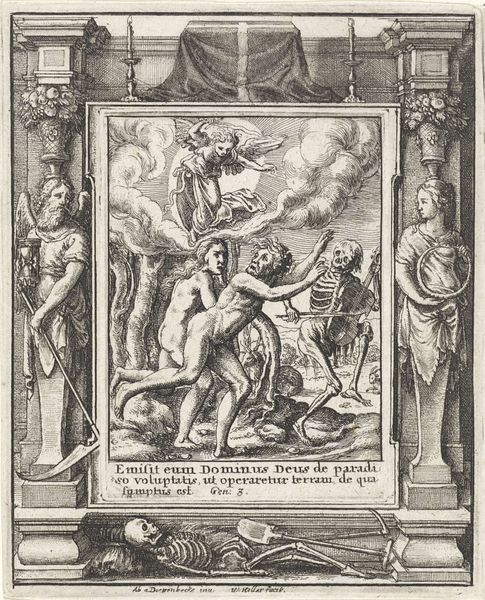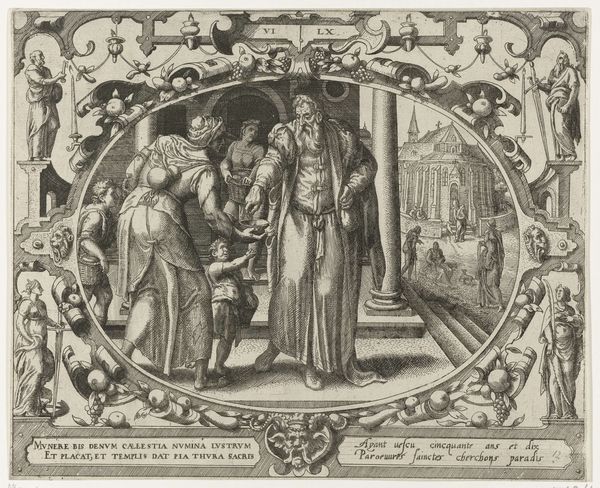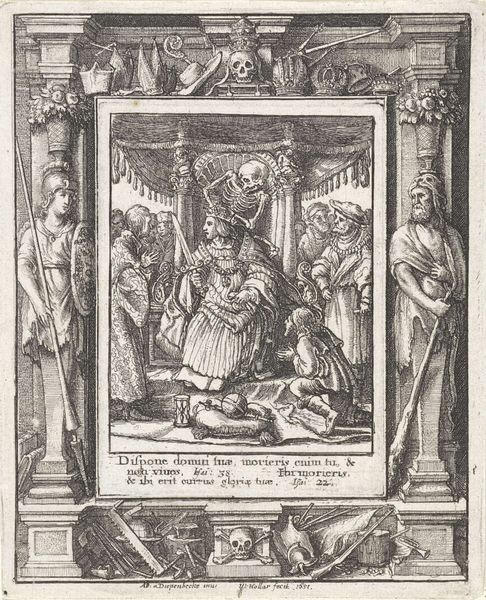
Titelprent voor de serie over het overlijden en de lijkstatie van Maria II Stuart, koningin van Engeland, 1695 1695
0:00
0:00
print, engraving
#
portrait
#
allegory
#
baroque
# print
#
line
#
history-painting
#
engraving
Dimensions: height 355 mm, width 255 mm
Copyright: Rijks Museum: Open Domain
Curator: This intricate engraving is entitled "Titelprent voor de serie over het overlijden en de lijkstatie van Maria II Stuart, koningin van Engeland, 1695," or roughly translated, "Title print for the series on the death and funeral procession of Mary II Stuart, Queen of England, 1695". It's the work of Romeyn de Hooghe. Editor: Oh, my. It’s like a fever dream rendered in fine lines. So much drama. It’s grand and awful, isn’t it? The scale is impressive and oppressive all at once, a swirling vortex of mourning. Curator: Indeed. De Hooghe was a master of allegorical prints, and this is a prime example. It depicts Queen Mary's funeral through a lens of both historical event and symbolic spectacle, reflecting the political and cultural weight of her death. Notice how classical figures mingle with contemporary mourners. Editor: Yes, there's a theatricality to it, like a stage play of grief. I’m struck by how busy it is – so many tiny figures enacting these miniature dramas. Is that supposed to be Mary elevated there? She looks...distant, almost unaware of all the pomp below. Curator: That is her, yes. De Hooghe uses classical architecture and symbolic figures like Mars to frame Mary’s death as a momentous occasion, embedding her within a narrative of both national and historical significance. It speaks volumes about how monarchy manipulates its image through public display. Editor: Manipulates... or immortalizes? Maybe it's both. Still, that feeling of cold spectacle is hard to shake off. All these players caught in a ritual they can't escape. Is it honor, or just… obligation? There is something genuinely chilling about all that ornate formality and calculated public performance of mourning. Curator: I'd say both are true. De Hooghe's print isn't just a record, but a carefully constructed argument about power, legacy, and the public role of the monarchy. His baroque style reinforces that grand performance. It is full of persuasive detail, all directed to ensure the enduring significance of Mary. Editor: Mmm, enduring significance, perhaps, at the cost of intimate sincerity. Even so, stepping into the past like this is always enlightening, even when a bit disconcerting. Curator: Precisely. These images teach us so much about the creation of shared cultural narratives and the construction of memory through art.
Comments
No comments
Be the first to comment and join the conversation on the ultimate creative platform.
